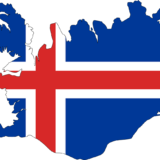All Categories
L’héritage de l’Europe coloniale : incertitude et instabilité. Que signifie être indien?
L’histoire de l’Inde d’aujourd’hui est étroitement liée à celle de son passé colonial. En effet, le pays a été sous l’emprise britannique de 1858 à 1947, année de son accession à l’indépendance. D’autres territoires comme le Pakistan, le Bangladesh, le Sri Lanka et la Birmanie étaient également intéressés par une souveraineté analogue. Malheureusement, de nombreux pays, ayant traversé au cours de leur histoire une domination étrangère suivie de la décolonisation, ont connu des périodes de violence et même parfois de génocide.
Due lingue, due statue, due storie…
Scopriamo uno dei segreti del nord Italia: esiste una regione che non è né Italia né Austria… o forse è un po’ di entrambe!
Meeting Halfway, l’Europa a portata di click
Lo scorso luglio la nostra collaboratrice Milena Parotti è stata intervistata da Giulia Calvi, autrice per conto di The Password, giornale gestito da studenti volontari dell’Università di Torino.
Our Summer 2021
How are young people living this summer in various parts of Europe? We interviewed some of our collaborators to find out…
Arrestato il finanziatore del genocidio in Ruanda
Il 16 maggio 2020 è stato arrestato Félicien Kabuga. Durante gli anni ’90 aveva diffuso l’odio e finanziato gli atti violenti nei confronti della popolazione Tutsi.
Борген: Отхвърляне или потвърждение на женските лидерски стереотипи?
Датският телевизионен сериал „Борген“ (2010) разказва измислената история на Биргит Нюборг, първата жена датски премиер в „сериалската“ вселената. Борген предлага нова перспектива към стереотипните женски и мъжки лидерски стилове. Как точно? Нека разгледаме първите два епизода от поредицата, когато Ниборг печели изборите и сформира коалиционно правителство.
Borgen: Rejection or Confirmation of Female Leadership Stereotypes?
The Danish TV series “Borgen” (2010) narrates the fictional story of Birgitte Nyborg, the first female Danish prime minister in the series’ universe. Borgen offers a new perspective on stereotypical female and male leadership styles. How? Let us look at the first two episodes of the series, when Nyborg wins the elections and forms a coalition government.
Un piatto per tutti: la fonduta
Oggi parliamo di un piatto delizioso, particolarmente consigliato agli amanti del formaggio… La squisita fonduta!
Earthquakes in Iceland: seismic crisis of 2021?
Iceland – a small island sandwiched between Greenland and the European continent, famous for hot springs, vikings, and volcanoes.
Oda a la Alegría y el himno de Europa
Si le preguntamos por el himno de Europa a cualquier ciudadano de la Unión Europea que haya nacido antes de la caída del Muro de Berlín, es probable que obtengamos respuestas muy diversas en función de su origen. Si, por ejemplo, ese ciudadano es español, nos responderá que le suena una canción del rockero Miguel Ríos que tiene que ver con Europa, con Beethoven y la idea de la hermandad entre los seres humanos. Es posible que otro ciudadano de un país diferente recuerde una canción o melodía que también tenga que ver con Beethoven y con la paz y el respeto entre hermanos, aunque no se acuerde exactamente por qué es así. Pues bien, estos testimonios dan respuesta a por qué el himno de Europa y el de la Unión Europea es el que es y cómo define nuestra identidad.














